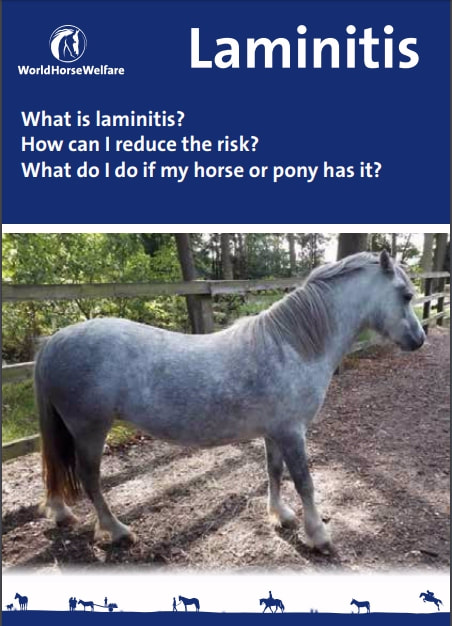|
World Horse Welfare have brought out a new Laminitis leaflet.
Points: Laminitis is a painful condition that can affect any horse, pony, donkey or mule. Laminitis is always a veterinary emergency. Laminitis occurs when the laminae in the foot become weakened by losing their normal shape, resulting in instability of the pedal bone and signs of pain and lameness [pain isn't always seen]. Laminitis is due most commonly to a metabolic/hormonal disorder, e.g. EMS and PPID, and can also follow an inflammatory condition, e.g. systemic sepsis or reatined placenta, or severe non-weight bearing lameness. Common signs of laminitis include:
|
1 restricting movement, pain relief and supporting the feet,
2 therapeutic trimming [TLS would argue that shoeing is almost never the best option, and realigning trimming should be part of the initial care], and diagnosis/treatment/management of hormonal disorders,
3 ongoing management of the horse's diet, exercise and footcare.
Laminitis prevention:
WHW suggest that important risk factors for laminitis include recent weight gain, a history of laminitis and foot soreness after shoeing/trimming. Ensuring a horse is not overweight is very important for preventing laminitis. A history of laminitis tells you that they almost certainly have a hormonal condition (EMS / PPID) that needs to be managed/treated, and chronic laminitis to be corrected. Foot soreness after shoeing/trimming is often seen in horses that have had laminitis that haven't had their feet correctly realigned and supported/protected - often it is foot pain from chronic (uncorrected) laminitis that is seen when horses appear to have recurrent, and not necessarily new laminitis (linked to abnormal hormone production).


 RSS Feed
RSS Feed